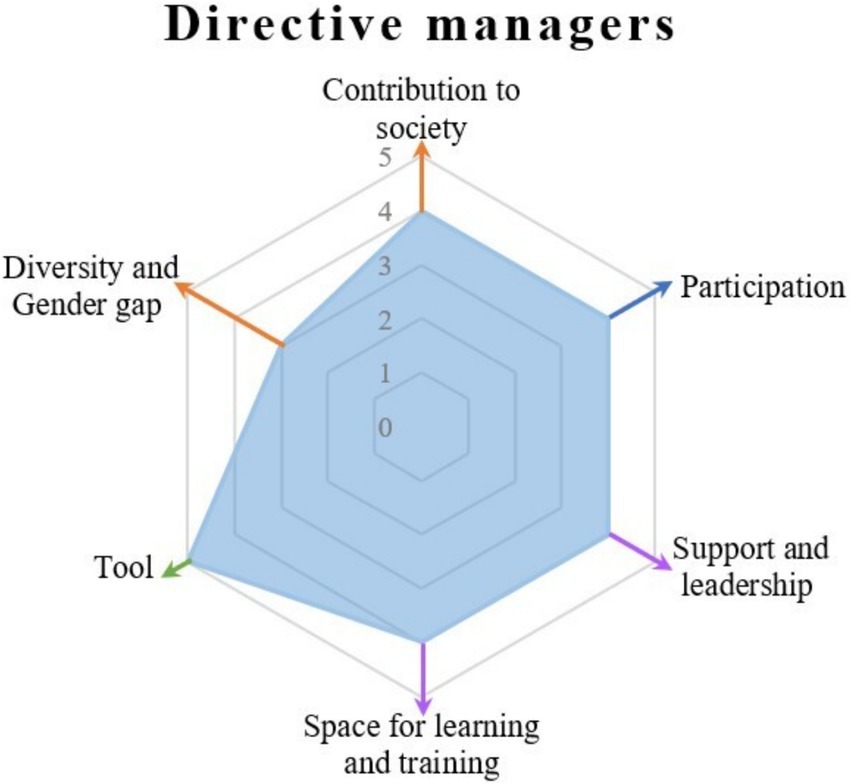STEM gender gap persists – LAist

Report on Gender Disparity in STEM Fields and Implications for Sustainable Development Goals
Executive Summary
Despite significant investment and focus over the past decade, progress toward gender parity in Science, Technology, Engineering, and Math (STEM) fields in California has been minimal. This stagnation directly impedes the achievement of several key Sustainable Development Goals (SDGs), particularly SDG 4 (Quality Education), SDG 5 (Gender Equality), and SDG 8 (Decent Work and Economic Growth). Analysis indicates that cultural factors, shifting policy priorities, and funding cuts have created significant barriers to women’s full participation in STEM, undermining efforts to foster innovation (SDG 9) and reduce inequalities (SDG 10).
Analysis of Current Trends in STEM Education and Employment
Stagnant Growth in Female Representation
Data from California’s four-year colleges reveals a persistent gender gap in STEM degree attainment, challenging the objectives of SDG 4 to ensure inclusive and equitable quality education for all. A comparative analysis highlights the slow pace of change:
- Data Period: 2009-10 school year compared to 2022-23.
- Engineering: The share of bachelor’s degrees awarded to women increased from approximately 19% to only 25%.
- Computer Science: Female representation grew from nearly 16% to about 23%.
- Mathematics and Statistics: The percentage of women graduating with degrees in these fields has declined over the last five years.
This slow progress indicates that at the current rate, achieving gender parity—a core target of SDG 5—will take an exceptionally long time. The disparity extends into the workforce, where women constitute just a quarter of STEM professionals despite making up 42% of California’s total workforce, a significant obstacle to SDG 8.
Contributing Factors to Persistent Disparity
The underrepresentation of women is not a biological phenomenon but a result of systemic and cultural barriers that conflict with the principles of SDG 5 and SDG 10.
- Cultural Perceptions and Lack of Role Models: Societal perceptions about women’s roles and a deficiency of visible female leaders in STEM fields continue to discourage participation.
- Shifting Policy and Funding Priorities: Attention and resources have shifted away from initiatives supporting women in STEM. State and federal budget cuts to educational and research programs, such as the California Education Learning Lab, directly undermine SDG 4 by weakening the infrastructure designed to close equity gaps.
- Erosion of Partnerships: A change in focus among private and corporate funders, moving away from topics perceived as controversial like “women,” “girls,” or “climate change,” weakens the multi-stakeholder partnerships essential for achieving the SDGs (SDG 17).
Impact on Sustainable Development and Innovation
Economic Growth and Workforce Stability
Gender parity in STEM is critical for sustainable economic development as outlined in SDG 8. Science and technology are primary drivers of innovation, economic growth, and national security. The failure to include women fully in these lucrative and stable careers represents a significant loss of talent, hindering the U.S. industry’s ability to find qualified workers and achieve its full potential for innovation (SDG 9).
Connecting STEM to Societal Benefit
Evidence suggests that women are more attracted to STEM fields when the application of the work to societal benefit is clear. This aligns with the overarching goal of the SDGs to create a more sustainable and equitable world.
- Overrepresentation in Biology: Over 64% of biology bachelor’s degrees in California were awarded to women, often because the field is seen as a direct pathway to health care professions.
- Applied Research: Students like Chloe Lynn at UC Berkeley are motivated by applying theoretical mathematics to real-world problems, such as reinforcing infrastructure against earthquakes. This approach demonstrates how STEM disciplines can directly contribute to building resilient communities (SDG 11).
Recommendations for Advancing Gender Equality in STEM
Strengthening Educational and Support Systems
To accelerate progress towards SDG 4 and SDG 5, a renewed and sustained commitment is required.
- Restore and Increase Funding: Governments and philanthropic organizations must reinvest in programs that support women and girls in STEM, recognizing these initiatives as fundamental to achieving national and global development goals.
- Improve Advising and Mentorship: Educational institutions should provide better advising to counteract biases that steer women toward certain scientific fields and away from others like engineering and computer science.
- Promote Applied Learning: Educators should emphasize the practical, people-centric applications of all STEM fields to make them more relevant and appealing to a broader range of students.
- Foster Inclusive Communities: Creating supportive and inclusive communities within academic departments, such as UC Berkeley’s Cal NERDS center, is crucial for retaining underrepresented students in STEM programs.
Analysis of Sustainable Development Goals in the Article
1. Which SDGs are addressed or connected to the issues highlighted in the article?
-
SDG 4: Quality Education
The article directly addresses the quality and accessibility of education, particularly in Science, Technology, Engineering, and Math (STEM) fields. It discusses the rates at which women attain STEM degrees, their representation in high school AP computer science classes, and the funding for educational initiatives like the California Education Learning Lab, which aims to close equity gaps in science and technology.
-
SDG 5: Gender Equality
This is the central theme of the article. It focuses on the underrepresentation of women in STEM education and careers, the slow progress toward gender parity, and the cultural phenomena and perceptions that contribute to this gap. The entire discussion revolves around achieving equality for women in these specific economic and academic sectors.
-
SDG 8: Decent Work and Economic Growth
The article connects the issue of women in STEM to broader economic concerns. It highlights that STEM jobs are “lucrative and stable” and that achieving gender parity is critical for economic growth, especially as industries struggle to find qualified workers. It implicitly addresses the need for full and productive employment for all, including women, in high-value sectors.
-
SDG 9: Industry, Innovation, and Infrastructure
The article emphasizes that “Science and technology spur innovation and economic growth while promoting national security.” The discussion on the need for more qualified workers and the impact of cuts to scientific research funding directly relates to enhancing scientific research and upgrading technological capabilities, which are core components of this SDG.
2. What specific targets under those SDGs can be identified based on the article’s content?
-
SDG 4: Quality Education
- Target 4.3: By 2030, ensure equal access for all women and men to affordable and quality technical, vocational and tertiary education, including university. The article’s focus on the percentage of women attaining bachelor’s degrees in engineering, computer science, and math directly relates to this target of equal access to university-level education.
- Target 4.4: By 2030, substantially increase the number of youth and adults who have relevant skills, including technical and vocational skills, for employment, decent jobs and entrepreneurship. The discussion about increasing the number of women pursuing and attaining STEM degrees is aimed at equipping them with the technical skills needed for employment in these fields.
- Target 4.5: By 2030, eliminate gender disparities in education and ensure equal access to all levels of education and vocational training for the vulnerable… The article highlights the gender disparity in STEM fields from high school (“underrepresented in certain high school classes, such as AP computer science”) through university and graduate programs.
-
SDG 5: Gender Equality
- Target 5.5: Ensure women’s full and effective participation and equal opportunities for leadership at all levels of decision-making in political, economic and public life. The article’s core argument about the low share of women in STEM careers (only “a quarter of those working in STEM careers”) points directly to a lack of full participation in key economic sectors.
- Target 5.b: Enhance the use of enabling technology, in particular information and communications technology, to promote the empowerment of women. The focus on increasing women’s participation in fields like computer science and technology is directly linked to this target, as it aims to empower women through greater involvement in the creation and use of technology.
-
SDG 8: Decent Work and Economic Growth
- Target 8.5: By 2030, achieve full and productive employment and decent work for all women and men… and equal pay for work of equal value. The article advocates for increasing the number of women in “lucrative and stable” STEM jobs to address workforce shortages and promote economic growth, which aligns with the goal of achieving full and productive employment for women.
-
SDG 9: Industry, Innovation, and Infrastructure
- Target 9.5: Enhance scientific research, upgrade the technological capabilities of industrial sectors in all countries… encouraging innovation and substantially increasing the number of research and development workers… The article discusses how cuts to federal and state research funding “will stymie progress in science, technology, and engineering.” It also highlights the struggle of U.S. science and technology industries to find qualified workers, underscoring the need to increase the number of people in STEM, including women.
3. Are there any indicators mentioned or implied in the article that can be used to measure progress towards the identified targets?
-
Indicators for SDG 4 & 5 (Education & Gender Equality)
- Percentage of women receiving bachelor’s degrees in specific STEM fields: The article provides specific data: “The share of women who received a bachelor’s degree increased from roughly 19% to about 25% in engineering and from nearly 16% to about 23% in computer science.” It also notes that in math and statistics, “the percentage of women who graduate with a degree has gone down.” These are direct quantitative indicators.
- Representation of girls in advanced high school courses: The article mentions that “Girls are also underrepresented in certain high school classes, such as AP computer science,” which serves as an indicator of the gender gap at the secondary education level.
- Proportion of women in the STEM workforce: The statistic that “women make up about 42% of California’s workforce, they comprise just a quarter of those working in STEM careers” is a clear indicator of women’s participation in the economic life of these sectors.
-
Indicators for SDG 8 & 9 (Work, Innovation)
- Funding for scientific research and education programs: The article implies that the amount of funding is a key indicator of progress. It details cuts to programs like the “California Education Learning Lab,” whose budget was cut “to about half its former size,” and federal cuts to “scientific research at California’s universities.” These funding levels can be used to measure commitment to enhancing scientific research (Target 9.5).
- Number of women in specific STEM careers: The finding that “Fewer women were working in math careers in 2023 than in the five or 10 years before that” is a specific indicator for measuring employment trends and progress toward full and productive employment for women in these fields (Target 8.5).
4. Summary Table of SDGs, Targets, and Indicators
| SDGs | Targets | Indicators |
|---|---|---|
| SDG 4: Quality Education |
|
|
| SDG 5: Gender Equality |
|
|
| SDG 8: Decent Work and Economic Growth |
|
|
| SDG 9: Industry, Innovation, and Infrastructure |
|
|
Source: laist.com

What is Your Reaction?
 Like
0
Like
0
 Dislike
0
Dislike
0
 Love
0
Love
0
 Funny
0
Funny
0
 Angry
0
Angry
0
 Sad
0
Sad
0
 Wow
0
Wow
0

















































:focal(1500,1000)/https://media.globalcitizen.org/a6/9a/a69a4720-d8a1-4715-b596-18738d03c05c/rotary_polio_hero_image.jpg?#)






/countries/sri-lanka/photo-credit---dmc-sri-lanka.tmb-1200v.jpg?sfvrsn=dc298bcc_1#)


















